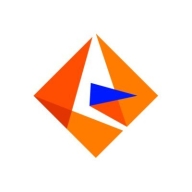

Informatica PowerCenter and SnapLogic compete in the data integration market. SnapLogic appears to have an advantage due to its flexibility and low-code environment, which simplify integration and deployment processes.
Features: SnapLogic is valued for its low-code development, fast deployment, and ability to connect to numerous systems with pre-built connectors and snaps. It provides real-time integration capabilities and maintains a user-friendly interface. Informatica PowerCenter is praised for its robust data integration capabilities, data governance features, and ability to handle large data volumes with advanced transformations. It supports integrating data from various sources and excels in security and performance.
Room for Improvement: SnapLogic could improve its capabilities for handling complex integrations and large data volumes. Its API management and support services also need enhancement, along with more comprehensive data preview and debugging tools. Informatica PowerCenter is often criticized for its complexity and high costs. Users desire better performance metrics and improved cloud integration to counter its complex setup and lack of user-friendliness.
Ease of Deployment and Customer Service: SnapLogic supports cloud-based deployment options, offering solutions that are easy to deploy with hybrid and public cloud options. Its customer service is well-regarded, though technical support has mixed reviews. Informatica PowerCenter largely involves on-premises deployment and is noted for its complexity in setup, although its technical support is generally well-rated despite occasional delays reported by customers.
Pricing and ROI: SnapLogic offers flexible pricing models based on consumption, making it more adaptable and potentially less costly, especially for smaller businesses looking for scalable solutions. Informatica PowerCenter is perceived as expensive, with licensing and maintenance costs being a point of concern for small and medium-sized enterprises, aligning more with large enterprise solutions.
It also plays a vital role in revenue calculations, net asset valuations, and other key factors that support customer data and investment data pipelines.
SnapLogic is really helpful and processes in very little time, so it doesn't take much time compared to any legacy tool.
SnapLogic has helped automate manual data transfers significantly and improved our workflow efficiency, reducing integration development timelines considerably, which reflects a good ROI.
I like the technical support provided by Informatica.
I have occasionally needed to communicate with the technical support of Informatica PowerCenter, especially when raising cases for complex mappings and performance optimization to identify bottlenecks in transformations.
Customer support scales well; as pipeline volume grows, we have been able to add more integrations and users without performance degradation.
Some SMEs are allotted for the organization, so in case of any issue, we have their email IDs to contact them for support, including SMEs and community.
The technical support from SnapLogic is excellent, and I would give it a complete ten.
In the cloud, scaling up and down becomes easy when working with cloud providers.
For scalability, I would rate Informatica PowerCenter between eight to nine.
I rate the scalability of SnapLogic as eight out of ten.
Informatica PowerCenter is stable and can scale well.
The product is very stable with very few issues encountered in production.
But recently, in a year, I haven't found many performance issues in SnapLogic.
I would rate the stability of SnapLogic as nearly ten out of ten.
With Informatica PowerCenter, I am looking for an AI interface that looks at the underlying data model of the databases and the metadata of the tables, allowing the developer to provide instructions on what data sources to connect to and how to apply or create Transformations.
Informatica Cloud and its support becomes quite expensive for the organization compared to peers such as SnapLogic or Netezza, which offer lower pricing.
Utilizing more stored procedures from Oracle databases in an easy way would significantly boost performance.
If the AI capabilities and integrations were more intuitive and easy to learn for new users, it would be greatly beneficial.
They can improve more visuals, with graphical representations, such as how many things can be added, how many users can be added or dropped, and how the back-end nodes can be graphically shown in a better way.
Some advanced features lack detailed documentation, and debugging complex pipelines could be more intuitive.
The price of Informatica PowerCenter is high, especially for small and medium-sized businesses.
I find that the pricing and licensing for Informatica PowerCenter align with its quality.
I would say the pricing is on the higher side, but it aligns with the capabilities offered for mid- to large integrations.
There would be only one point of improvement if the price could be lower.
SnapLogic is positioned at around seven or eight out of ten in terms of pricing.
The system supports real-time integration, which is essential for many of my tasks.
The most valuable features of Informatica PowerCenter that I have found so far include transformations, the ease of connectivity with different source systems, and the parameter files.
The functions in Informatica PowerCenter that I have found most valuable are the way it manages the volume of data, the push down optimization, and the performance aspects of it, mostly related to parallelism techniques.
I also like the whole child-parent pipeline feature; it allows me to break up a process into smaller pieces and then have one big pipeline that controls these smaller pipelines.
SnapLogic has helped automate manual data transfers, improved workflow efficiency, and significantly reduced the integration development timelines, which is a measurable outcome.
I find SnapLogic to be user-friendly, especially for beginners with limited experience in data engineering or ETL.
| Product | Market Share (%) |
|---|---|
| Informatica PowerCenter | 4.4% |
| SnapLogic | 1.1% |
| Other | 94.5% |


| Company Size | Count |
|---|---|
| Small Business | 15 |
| Midsize Enterprise | 10 |
| Large Enterprise | 72 |
| Company Size | Count |
|---|---|
| Small Business | 11 |
| Midsize Enterprise | 5 |
| Large Enterprise | 11 |
Informatica PowerCenter is a data integration and data visualization tool. The solution works as an enterprise data integration platform that helps organizations access, transform, and integrate data from various systems. The product is designed to support companies in the full cycle of a project, from its initial rollout to critical deployments. Informatica PowerCenter allows developers and analysts to collaborate while accelerating the work process to deploy projects within days instead of months.
The Advanced edition of the product provides an additional real-time engine which allows companies to have always-on enterprise data integration. This ensures seamless collaboration and increment of data lineage visibility and impacts analysis.
The Premium edition of the solution offers an early warning system that detects unexpected behaviors or incorrect utilization of resources in the workflows and alerts companies in the case that these occur. This version of the product also offers automatic data validation, which ensures data accuracy and reduces testing time and expenditure of resources for by up to 90%.
Informatica PowerCenter Features
The product provides users with various features which allow them to execute data integration initiatives such as analytics, data warehousing, data governance, consolidation, and application migration. The features of the solution include:
Informatica PowerCenter Benefits
The benefits of using Informatica PowerCenter include:
Reviews from Real Users
Yahya T., a developer and architect at L'Oreal, says the product is stable, provides good support, and integrating it with other systems is very fast.
Mohamed E., a senior manager for Data management and data governance at a tech company, says PowerCenter is stable, mature, and offers flexibility in building the pipeline and has a drag-and-drop mode because it's GUI-based; technical support is brilliant.
The SnapLogic Intelligent Integration Platform uses AI-powered workflows to automate all stages of IT integration projects – design, development, deployment, and maintenance – whether on-premises, in the cloud, or in hybrid environments. The platform’s easy-to-use, self-service interface enables both expert and citizen integrators to manage all application integration, data integration, API management, B2B integration, and data engineering projects on a single, scalable platform. With SnapLogic, organizations can connect all of their enterprise systems quickly and easily to automate business processes, accelerate analytics, and drive transformation.
We monitor all Data Integration reviews to prevent fraudulent reviews and keep review quality high. We do not post reviews by company employees or direct competitors. We validate each review for authenticity via cross-reference with LinkedIn, and personal follow-up with the reviewer when necessary.